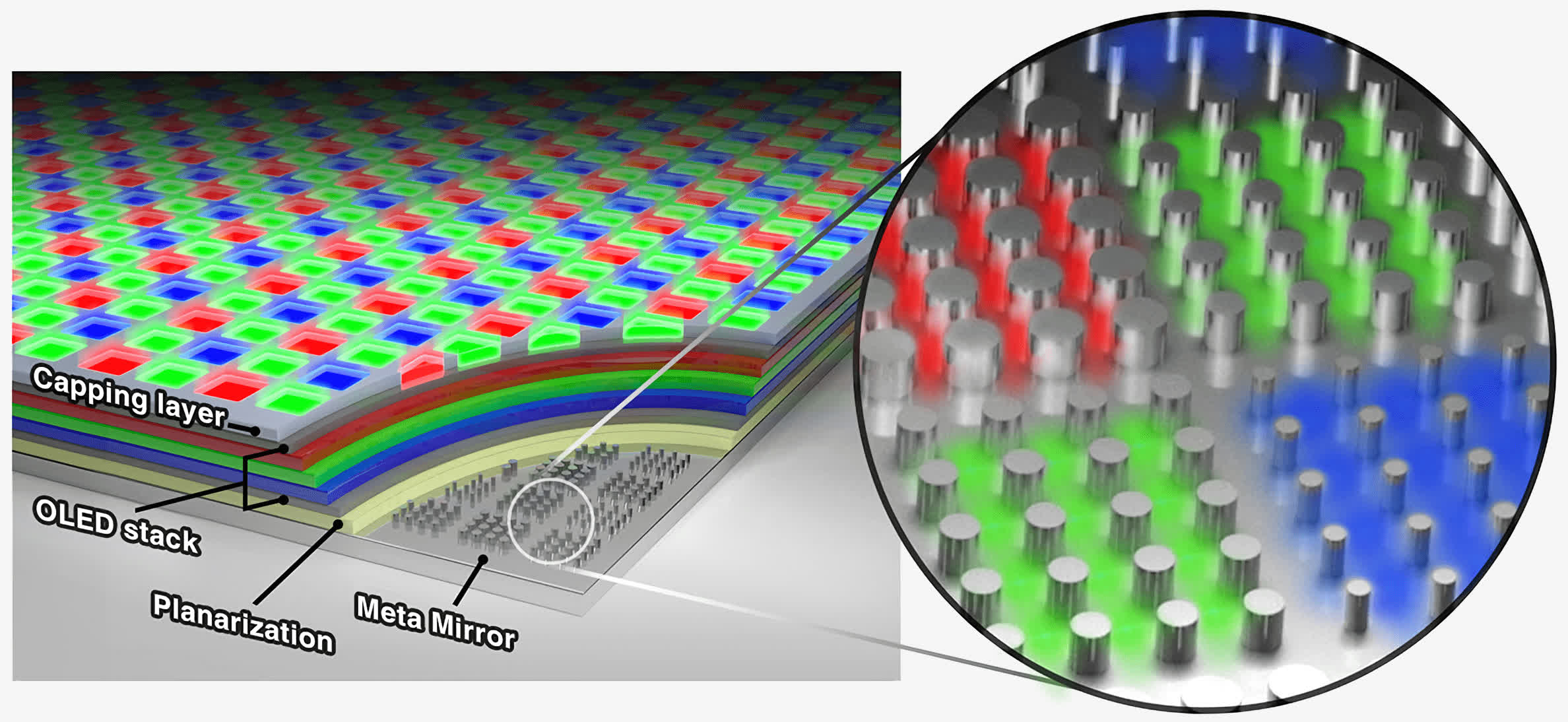What just happened? Researchers at Stanford University in collaboration with the Samsung Advanced Institute of Technology (SAIT) have developed a new organic light-emitting diode (OLED) architecture that significantly boosts pixel density. The breakthrough could lead to major leaps in augmented and virtual reality applications where resolution is paramount to immersion.
While visiting Stanford from 2016 to 2018, SAIT scientist Won-Jae Joo sat in on a presentation by graduate student Majid Esfandyarpour about an ultrathin solar cell technology being developed in the lab of materials scientist Mark Brongersma. Joo immediately saw how the technology could have major implications beyond renewable energy.
Joo met with Esfandyarpour after the presentation, which ultimately led to their collaboration.

Unlike RGB OLEDs and white OLEDs currently in use, the new technique uses a base layer of reflective metal with nanoscale corrugations that can manipulate the reflective properties of light, allowing different colors to be displayed in the pixels.
During lab tests, the teams created miniature proof-of-concept pixels. When compared to traditional color-filtered white OLEDs like those found in televisions, their prototypes exhibited a higher color purity and double the luminescence efficiency, which is a measure of how bright a screen is versus how much energy it consumes.
With an ultrahigh pixel density of up to 10,000 pixels per inch, their image quality should far surpass what is possible with modern OLED technology and virtually eliminate the screen door effect when used in VR headsets. What's more, they're easier to manufacture and more cost-efficient, too.
Samsung is working to build a full-size display although no timeline was provided for when that might be complete or when consumer products would be ready to go to market.
Masthead credit: leungchopan
